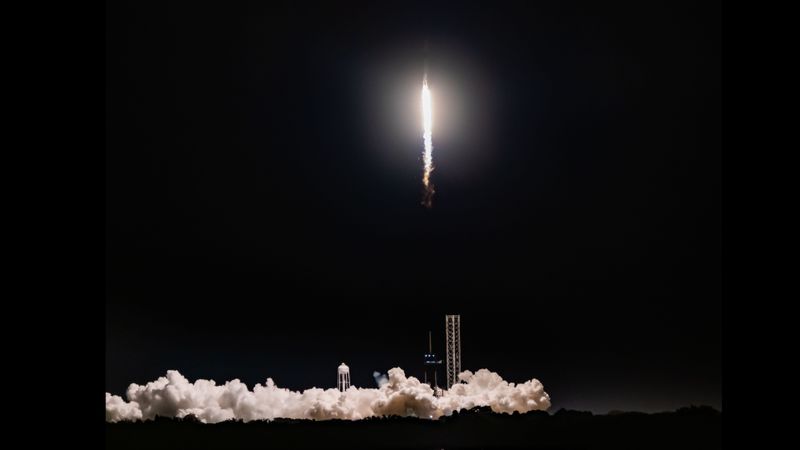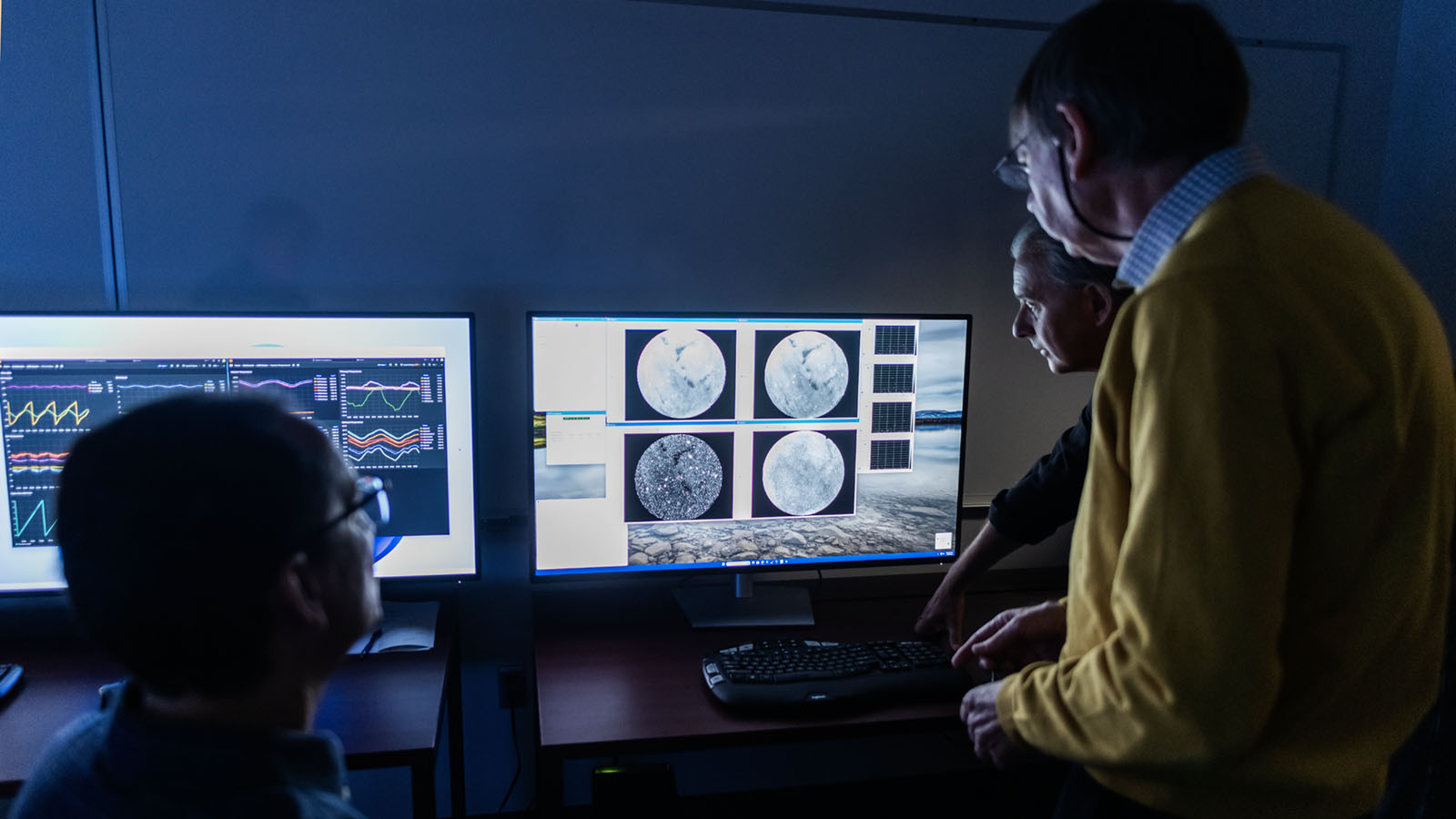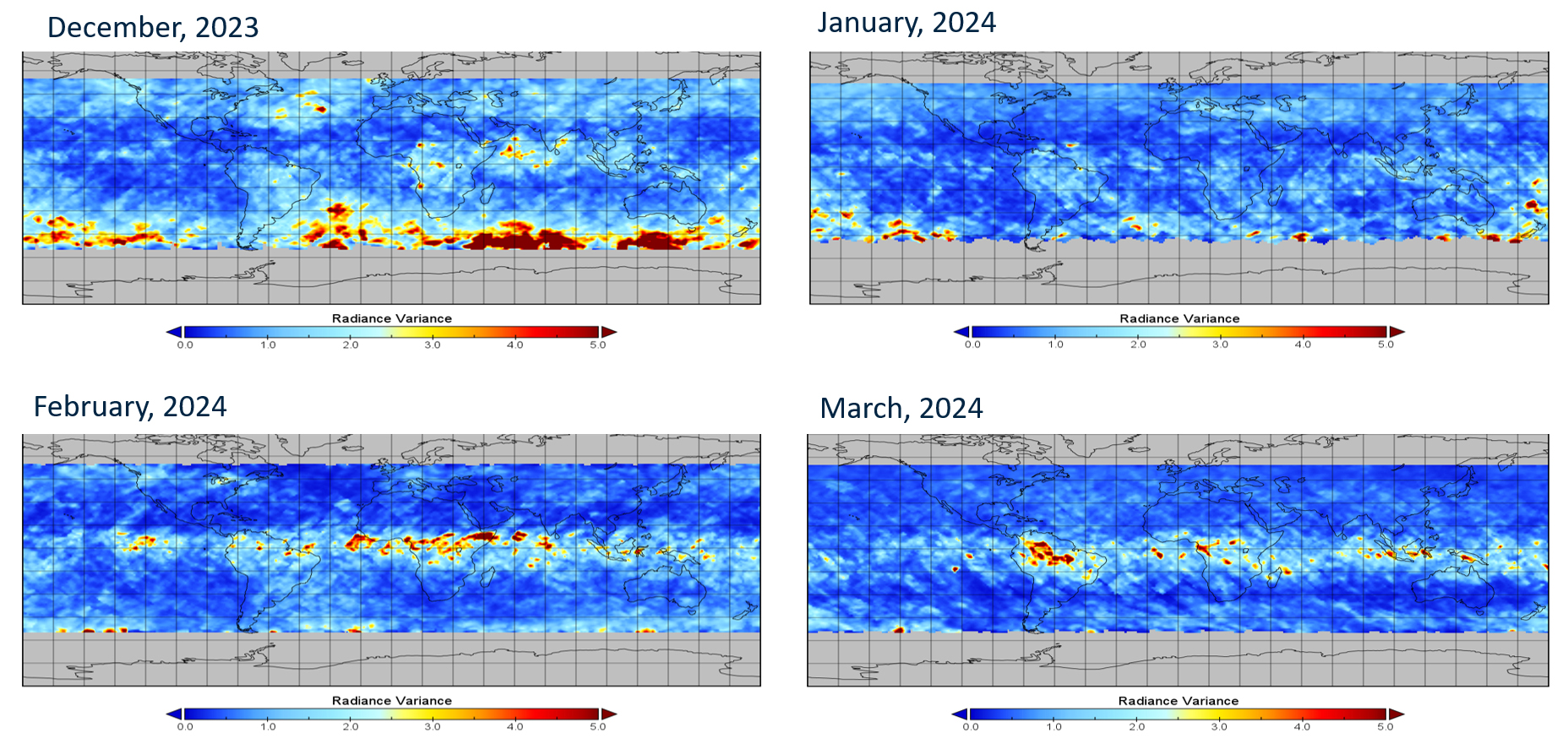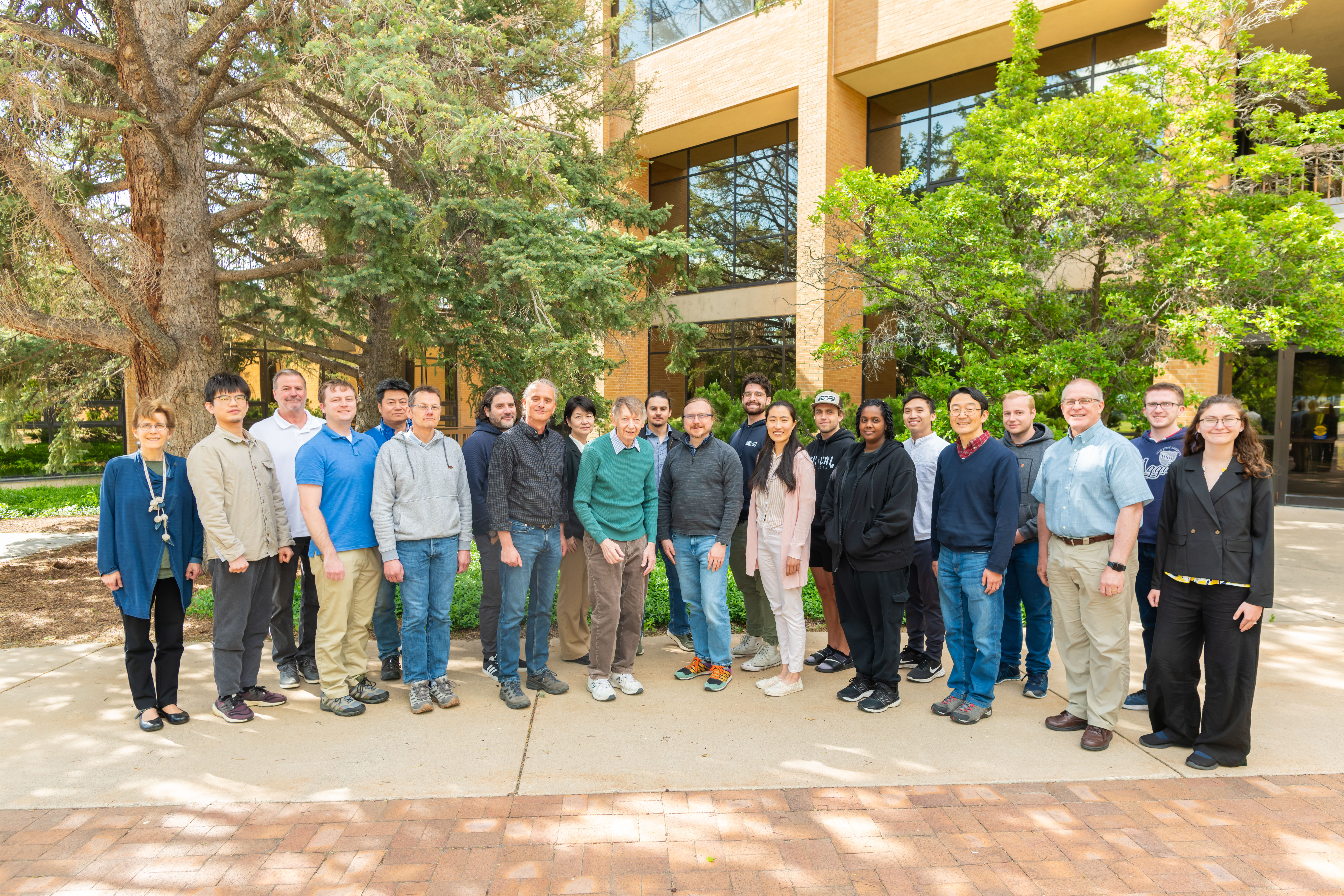
SDL celebrates AWE’s first year on orbit. Since launch, the instrument has captured its first image and other notable data. Credit: SDL | Allison Bills
American poet Muriel Rukeyser said, “The universe is made of stories, not atoms.” And NASA’s Atmospheric Waves Experiment (AWE) is adding to the universe’s stories. Have you ever wondered what causes airplane turbulence or what natural phenomenon can affect our communication systems? Atmospheric gravity waves (AGWs) play a role in the answer. AWE has made some impressive achievements during its first year, and its data promises to have a rippling effect for decades to come.
3, 2, 1, Launch
AWE launched to the International Space Station (ISS) on November 9, 2023. Members of the mission, science, and research teams gathered to celebrate their achievements and watch the launch. The excitement was palpable as years of intense collaboration led to a successful launch. Ten days after launch, AWE was installed on the ISS and was ready for action.
All Systems Are Go
“First light” was a day to celebrate! AWE captured its first images of gravity waves near the mesopause from the ISS on November 22, 2023. Pedro Sevilla, AWE’s mission operations manager at SDL, said, “First light represents a seminal milestone following a six-year effort to design, build, and test the four infrared telescopes and subsystems that make up AWE’s space-based instrument, the Advanced Mesospheric Temperature Mapper. It has been a privilege for the men and women of SDL to work in partnership with the Heliophysics Division of NASA’s Science Mission Directorate, the Explorers office at Goddard Space Flight Center, and USU’s College of Science to capture the first images for this important mission, which will help scientists better understand the interplay between Earth weather and space weather.”

Data in Action
Tropical storms are one of the many natural phenomena that form AGWs, making them a data gold mine for researchers. Recently, NASA had the opportunity to capture Hurricane Helene in action. Vanessa Thomas at NASA’s Goddard Space Flight Center wrote, “On Sept. 26, 2024, Hurricane Helene slammed into the Gulf Coast of Florida, inducing storm surges and widespread impacts on communities in its path. At the same time, NASA’s AWE instrument recorded enormous swells in the atmosphere that the hurricane produced roughly 55 miles above the ground. Such information helps us better understand how terrestrial weather can affect space weather, part of the research NASA does to understand how our space environment can disrupt satellites, communication signals, and other technology.”
AWE’s principal investigator, Ludger Scherliess at Utah State University, described the image below, explaining, “Like rings of water spreading from a drop in a pond, circular waves from Helene are seen billowing westward from Florida’s northwest coast.”
Answering Science Objectives
AWE scientists delivered an early holiday gift at the December 2024 American Geophysical Union (AGU) conference in Washington, DC. They reported on AWE’s mission progress toward achieving its science objectives. AWE’s first science objective is to quantify the seasonal and regional variabilities and influences of AGWs near the mesopause. And at one year in, AWE data is showing that AGW “hot spots” agree with previous AGW measurements from a near-Infrared Spectral Imager (VISI) in the mesopause region and CIPS/AIM AGW measurements from below.
The data also shows strong month-to-month variability during the first four months of operation. Scientists hypothesize that this could be due to sudden stratospheric warming events that occurred during the same timeframe. It is exciting that the data validates previous AGW data, providing increased confidence in our understanding.

Inspiring the Next Generation
If you want to get excited about science, you must get involved! Physicists from Utah State University’s AWE team collaborated with students attending East High in Salt Lake City, UT, on a machine learning project that not only benefited the mission, but also offered unparalleled real-world experience and mentoring. The students helped develop a machine learning model for direct-from-space atmospheric waves analysis. Mary-Ann Muffaletto, USU’s College of Science Public Relationships Specialist, captured both student and teacher excitement about this unique opportunity.
“I think it’s incredible that we’re a part of this mission,” said East High junior Yamato Lerwill. “It’s a really unique opportunity that no other high schoolers that I know of are being able to do. We’re so lucky.” Yamato’s teacher, Shaunmicheal Bartschi, stated, “The idea that my students could be some of the first people in the world to see a particular data set was mind-blowing. It’s also exciting that we don’t exactly know how things are going to turn out. Our students are engaging in original research and making world-first observations. It’s an incredible opportunity.” This collaboration has been a monumental success, providing a strong foundation for each of the participating student’s future careers.
Continuing AWEsome Teamwork in 2025
SDL is honored to be a part of the AWE team and is looking forward to ongoing collaboration as AWE continues to reveal new information and expand our understanding of our world. The AWE team, led by NASA, includes Utah State University, the Space Dynamics Laboratory, University of Colorado Boulder, GATS, US Naval Research Laboratory (NRL), the National Center for Atmospheric Research (NCAR), and Embry-Riddle Aeronautical University.
